Crispr can accelerate natural processes and change the way food is grown.
- Transfer
On the fact that from a plant with fruits the size of a pea to bring a beautiful and juicy tomato, humanity has gone thousands of years. Now with the help of gene editing, scientists can change everything.
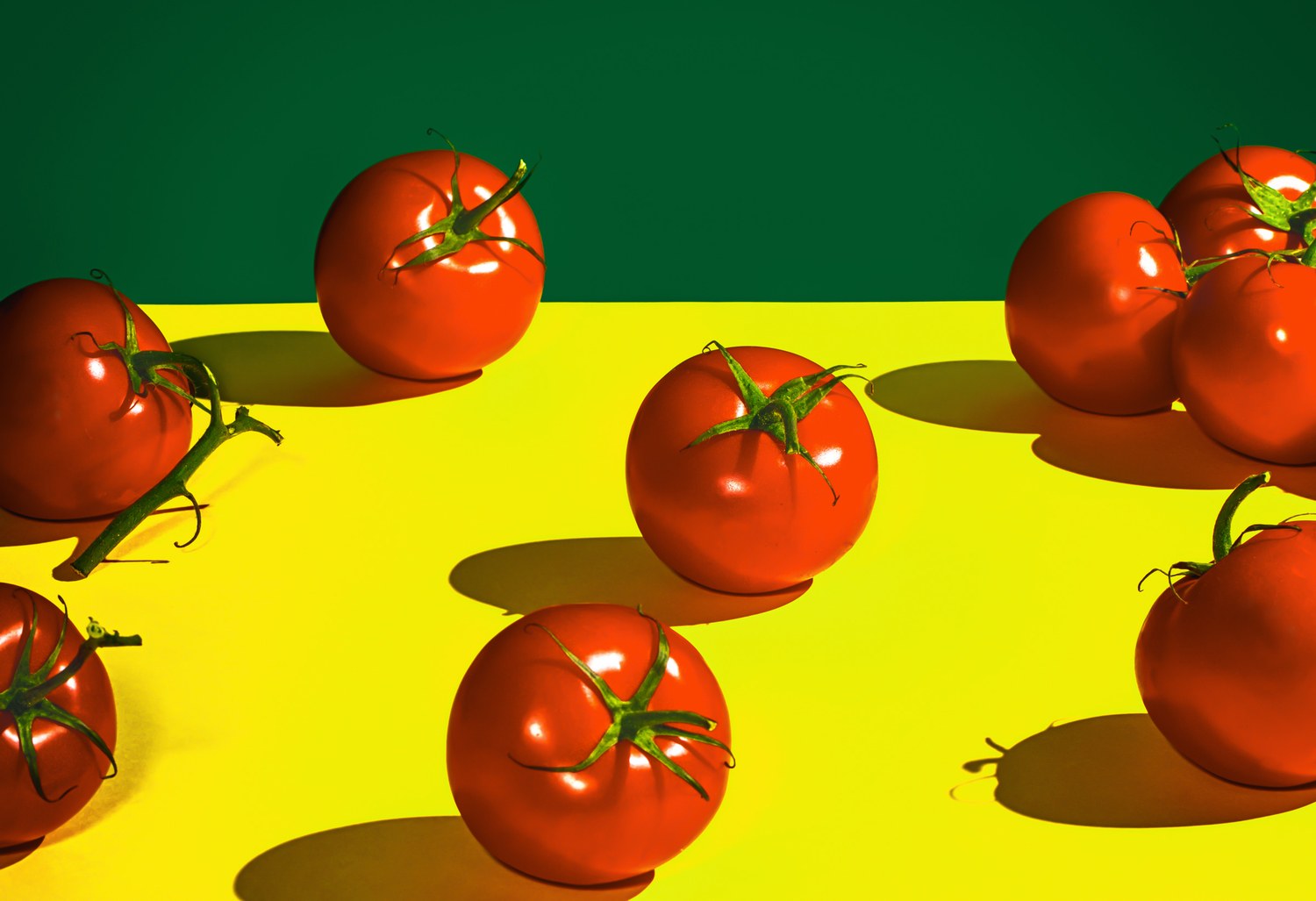
Like any self-respecting farmer, Zachary Lipman grumbled about the weather. Strongly knit, with short-cropped hair and a beard, Lipman stood in a greenhouse located in the middle of Long Island, surrounded by abundant and lush vegetation. “Oh, don't even ask,” he responded about the late and harsh spring. It was Tuesday mid-April, but the forecast was told about the probability of snow falling, and a cold wind blew across the island. This is not at all the weather that brings to mind the thought of summer tomatoes. But Lipman was thinking about the future, about the Day of Remembrance [last Monday of May / approx. transl.], when thousands of carefully planted tomato seedlings are transferred from greenhouses to the fertile land of Long Island. He hoped that the weather would finally change.
Although he worked as a teenager on a farm and had a romantic affection for the land, Lipman was not a farmer. He's a botanist at Cold Spring Harbor Laboratory in New York who studies genetics and plant development. And all these greenhouse plants are not ordinary tomatoes.
Introducing me to his constant companion Charlie (a sociable and slobbering labrador with a rottweiler), Lipman took me past hundreds of plants that indulge in daytime temperatures of 27 ºC, humidity from 40 to 60%, stimulating them for 14-hour photosynthesis using sodium discharge lamps high pressure . Some of the plants were barely blooming sprouts; others have just begun to reveal their characteristic yellow flowers, foreshadowing future fruits; and some are almost ripe, and their red fruits were poured with weight.
This greenhouse is different in that 90% of its plants have been genetically modified using a magical technology for editing genes, known as Crispr / Cas-9- which makes it probably the epicenter of the revolution in botany, which can forever change the future of not only tomatoes, but also many other food crops. Lipman and Joyce van Eck, his long-time partner from the Beuys Thompson Institute in Ithaca, New York, belong to a small army of researchers who use gene editing to turn a tomato into a botanical laboratory mouse. In this greenhouse, Crispr is a verb, every plant is an experiment, and a mutant is not a bad word.
Lipman walked to the far side of the building and pointed to various tomatoes of a special large variety - one of the commercial options that are sold in supermarkets, and not in farmers' markets. This plant, which was about two months old, was bent under the weight of large, almost mature fruits. It was a mutant, as Lipman explained, which they call "knotless." Most tomatoes on the stem near the place of the formation of the fruit have a swollen accumulation of tissue, a knot. When the tomato ripens, he says to himself, as Lipman put it, “OK, I have ripened - it's time to fall,” the node's cells receive a signal to die, and let the tomato go. So nature spreads tomato seeds; but this node has always been an unpleasant problem of agriculture, since it left a part of the stem making holes in mechanically collected fruits. Knotless Tomatoes, in which you can tear off the stem at the root, were obtained and grown for commercial use, but often they had side effects. These genetically modified versions avoid the unintended effects of traditional breeding. “Now we can use Crispr to work directly with the gene, cut it off with molecular scissors, which leads to a mutation,” said Lipman. “And voila: a knotless property of any sort you need.”
We moved on to several examples of Physalis pruinosa, a relative of vegetable Physalis , producing small and juicy fruits of Physalis. This plant has not yet been domesticated, and Lipman describes his wild version as a “monster”: tall, untidy and greedy, giving one pitiful fruit to the outgrowth. Physalis was growing next to it, in which scientists called a mutation called “self-trimming”. It was two times lower, not so bushy, and there were five or six fruits on each process. Lipman plucked one fruit from a mutant and offered it to me.
“Sniff it first,” he asked. “Enjoy the smell.” The smell was exotic and a bit tropical. I put it in my mouth and bit it, getting an explosion of different tastes. Like the related tomatoes, the taste turned out to be mysterious, smeared in time sweet and sour, decorated with volatile components that found my nose and complemented the taste.
“You just ate an edited plant,” said Lipman, smiling. “But don't worry too much.”

Zak Lipman among edited tomatoes
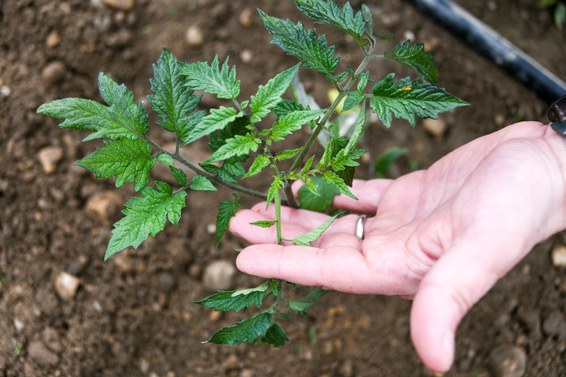
Genetically edited tomato bush
Lipman, like most scientists, believes that genetically modified plants are safe to eat. But his mischievous smile serves as an admission that not everyone considers this technology harmless. There are a lot of disturbances associated with genetic editing of plants. GMO crops, such as corn or soybeans, have been penetrating food, animal feed and biofuels for many years, and the battle around them has divided society in the United States and other countries. The Crispr revolution reinvents, or even re-ignites this debate. Most of the existing plants today were edited through the removal of genes (through mutation), and not through the introduction of genetic sequences taken from other species, as in the first generation of genetic modifications, which gave rise to fear of "frankenshtedoy" and environmental pollution. Precisely because that now editing is done by deleting, not adding, scientists argue that the current form of gene editing imitates mutations that occurred during classical agricultural selection. Perhaps this difference will not reassure critics, but it has convinced government regulators; genetically modified soybeans and potatoes are already being grown, and last March the USDA announced that the crops obtained using genetic editing are “indistinguishable” from those obtained by traditional selection and do not “require state supervision.”
The future of food attacks many questions: how to feed 9 billion mouths, how to farm in an era of unprecedented climatic uncertainty, how to create more stable and nutritious food for the public concerned about the new technology. Botanists are already using Crispr and related technologies for a fundamental change of plants - they edit wheat, reducing its gluten content, soybeans to get more useful oil, corn to increase yield, potatoes to improve storage (and reduce carcinogenic waste during cooking). In industrial and scientific laboratories, new editing tools are being developed that can seriously affect the food we all eat. However, this new-found ability to transform food coincided with the consolidation of agriculture into three megaconglomerates. These companies have the means to launch a new technology. The question is why they will use it.
Soy, potatoes and corn are seamlessly embedded in the food chain, but tomatoes add a big red exclamation mark to the current debate. Probably no other food crop can be more symbolic, considering what is at stake in terms of agriculture, biology, culture and growing homemade food. Tomato - the king of farmers' markets, the pearl of a home garden, alpha-vegetable of locks . The Lipman greenhouse presents only a few variants of how gene editing already changes tomatoes - it has plants that are blooming earlier, do not pay attention to the presence or absence of light, occupy a smaller area, place several fruits on the stem at once.
For people who love to eat or grow tomatoes (I am from both categories), the appearance of Crispr causes cynicism and dizzying hopes for the future of our favorite vegetable. Cynicism arises because most practical scientific attempts will perpetuate the bland taste of commercially grown tomatoes. In a sense, this is simply a sign of the victory of food producers seeking a greater harvest for less money, above the tastes of consumers who are served with taste and nutrition. (Harry Klee, a tomato expert at the University of Florida, says that the size of the ideal tomato for the industry should exactly match the size of the McDonald's hamburger). And hope - because there is something intriguing in the use of new technology to preserve the delicious, sweet-sour explosion of a family brand.tomato in a more resistant, not susceptible to diseases of the plant.
After walking with Lipman through his garden of human-made mutations, I could not help asking if Crispr will get any of the family varieties that I try to grow myself every year.
“We do not edit family varieties,” said Lipman. - Until. But it is already in development. They can benefit from minor adjustments. ”
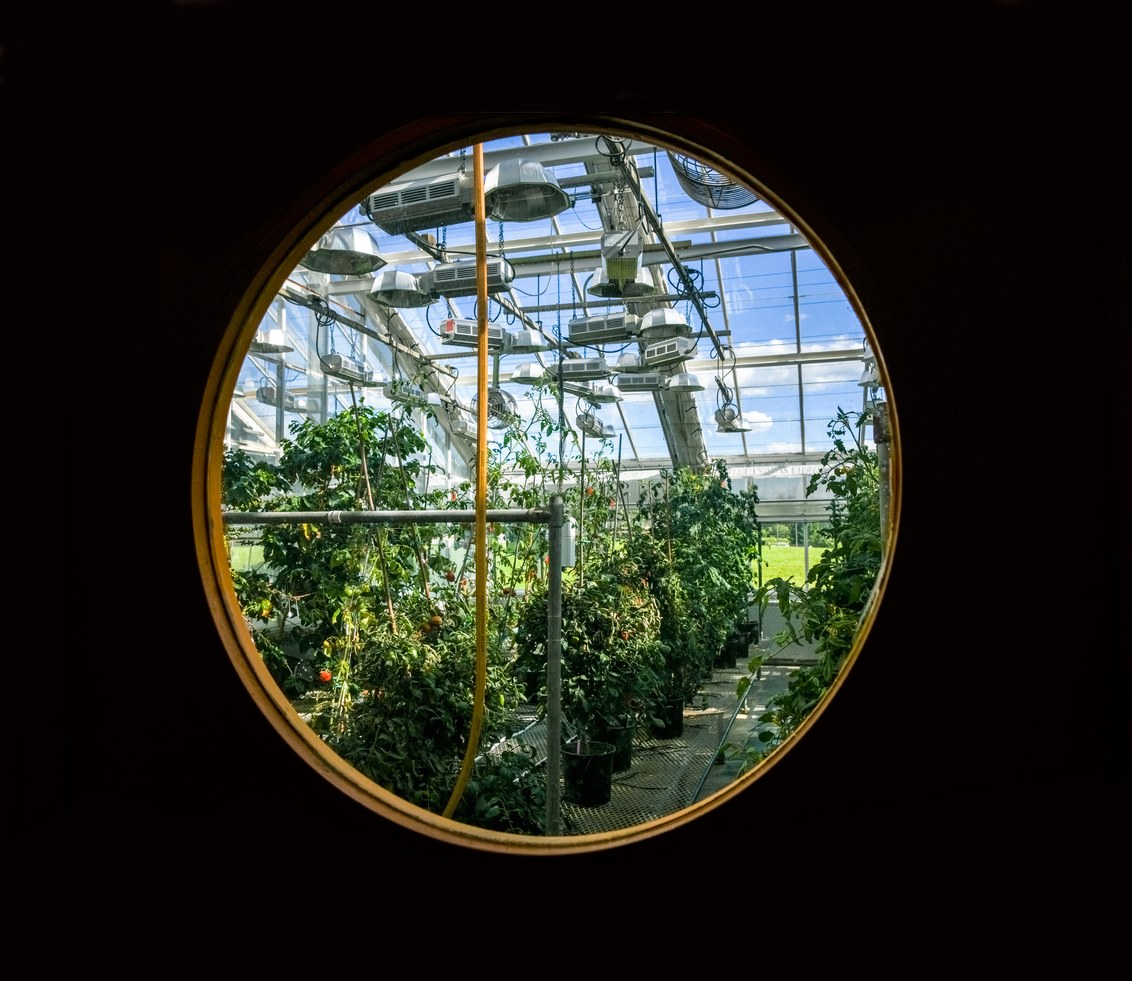
Tomatoes indulge and force photosynthesis at the Boyes Thompson Institute
This is a story about tomatoes. But still, like all agricultural stories, a story about mutations, both “natural” and man-made, tricky, invisible mutations and overly grotesque, mutations created in the laboratory earlier this year, and those that could have happened 10,000 years back like the ones that turned solanum pimpinellifolium(currant tomato), an unkempt perennial weed that produces fruits the size of peas, and growing on the Pacific coast in Peru and Ecuador, into these beautiful and huge fruits of family varieties growing in your garden. Our cultural dictionary left the word “mutation” only a mocking meaning, but if you think this word is bad, you probably shouldn't read further - and not eat vegetable food. The basic principle of plant breeding is to take advantage of genetic changes, mutations, without regard to whether these mutations are caused by sunlight, X-rays or Crispr. As Kle says, “I don’t know a single food crop, which can be found in a supermarket, not changed drastically compared to its wild-growing version.”
Any gardener is, voluntarily or involuntarily, a specialist in mutations. All the different varieties of family tomatoes - thin-skinned “brandivine”, apricot-bright “Joan Flamm”, greenish “black Crimea”, and my favorite “Bern rose”, rosy and delicious in taste - are products of long-standing low-quality mutations.
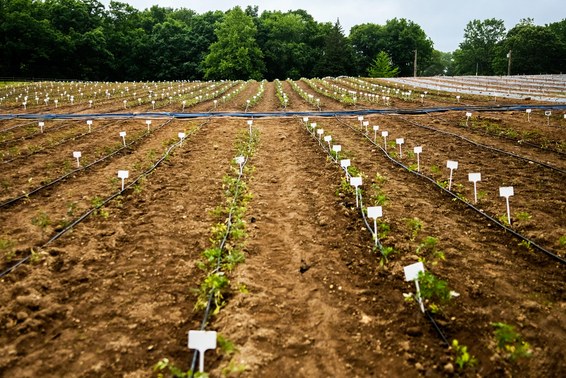
Research plantings at Cold Spring Harbor, where about 8,000 genetically edited plants grow
Every spring I sit on the floor with a bunch of pots filled with peat and initial soil, and awkwardly press the seeds of the above varieties into the virgin land. My wife wonders why I shouldn’t buy ready-made seedlings on the market right away, like everyone else, but I never outgrew my childish delight of watching how a tiny piece of plant DNA, surrounded by a hard shell of a seed, turns into a 1.5-meter plant that produces its flawless presents. The gardeners, the first self-taught biologists, are known for this delight. Like Lipman. That is how he engaged in genetic editing of tomatoes.
Lipman grew up in Milford, Connecticut. His father taught his native language, and his mother worked in health care. Among his earliest memories is a visit to a nearby farm with his father, at the age of 6-7, when he collected pumpkins lying here and there on the field, with their amazing shapes and colors.
This pumpkin field belonged to Robert Trit's farm, and when Lipman turned 13, he began working there every summer, cultivating his love for plants. When he graduated from school in 1996, he decided to start breeding and plant genetics, first at Cornell University, and then at Cold Spring Harbor, where he defended his doctorate, and now works as a researcher at the Howard Hughes Medical Institute.
Lipman's office is the temple of the tomato. Old labels with canned tomatoes and postcards with unreal huge tomatoes adorn the walls, and on the table, in old boxes, in wooden trays and plastic cabinets near the wall, thousands of small brown envelopes are stored with seeds, marked by years and varieties. The most characteristic relic is right at the door - a large reproduction in a frame from the book of the XVI century by Pietro Andrea Mattioli , which is considered the oldest color image of a tomato, made immediately after the Spanish expansion to America. For genetics like Lipman, Mattioli's drawing is especially important because it indicates that the pre-Columbian inhabitants of America could recognize the useful mutation of tomatoes - they had already turned a small wild fruit into large and golden.

The seeds are stored in boxes and then planted.
Until the 1930s, agricultural specialists relied on the same technology as the first farmers who grew tomatoes in North America: wait patiently for nature to produce a useful mutation, to be able to recognize the beneficial property ( for example, larger fruits), and create a new variety with this property, choosing mutated strains and propagating them. In other words, agriculture has always stood for unnatural selection — the choice of mutations by a person and the abandonment of others. During the Second World War, biologists have accelerated this process, deliberately causing mutations in the seeds with chemicals, x-rays and other radiation. But in this case, the process was slow. Selection of the desired properties can easily stretch for ten years.
Everything began to change in 2012, the fateful year for tomatoes. In May of that year, plant genetics specialists completed the tomato genome project - they deciphered the entire DNA sequence, all 900 million paired bases on 12 chromosomes. Then, in June, a group led by Jennifer Dudna of the University of California at Berkeley published the first work on a new gene editing technology, Crispr, which was soon followed by groups from the Broad Institute at MIT and Harvard. These two streams of research competed with each other to see if the new technology works with plants.
As soon as the information about Crispr appeared, Lipman thought: “Is it possible to apply it to tomatoes? If it is possible, then forward. ” It was necessary to quickly conduct an experiment with the genes of the tomato, which could prove the effectiveness of Crispr without delay. What gene did Lipman and van Eck intend on? Not one that would improve the size or shape of the fetus, since it would take a lot of time, and van Eck was impatient. “I don’t want it to be planted in a greenhouse and wait for it to grow,” she told Lipman. “I want us to see something already in the Petri dish.” So they chose a gene that is completely useless economically, and even less useful from a consumer point of view. It was a strange gene that, as a result of a mutation, produced disfigured tomato leaves that looked like needles. The mutated version was called “wire”.
The wire mutation was so poorly known that van Eck had to dig up a work from 1928 describing it in order to understand what she needed to look for. For each mutation using the Crispr technology, a specially prepared instrument called the “construct” - guide RNA is required., allowing you to target a specific gene of a tomato, and its attendant enzyme, cutting off the plant's DNA in the right place. In this case, Lipman developed a construct aimed at the wire gene and cutting it out. Mutation, strictly speaking, is caused not by Crispr technology, but by the plant itself, trying to heal the wound. Van Eck used a bacterium that perfectly infects plants to introduce the Crispr mutation into tomato cells. After mutation, these cells were transferred to Petri dishes, where they began to develop, giving rise to plants. Van Eck still had to wait a couple of months before the tomato cells turned into sprouts and grew shoots with leaves, but it was worth the wait.
“I still remember when I saw the first leaves,” she recalls. They were twisted into needles. “Adored, it worked!” She screamed, and rushed through the corridors of the institute, telling everyone who was ready to listen. “I was on edge, because, well, what generally works the first time?”
They not only demonstrated that Crispr is able to cause an inherited change in the trait in food crops, but also got its result in a couple of months instead of a year. They knew that the same process could, in principle, be used for editing, with extreme precision and unprecedented speed, any gene in any culture.
As soon as they were convinced that everything was working, Lipman and van Eck began to "crack" all the properties that they had just wanted to study in the last 15 years. One of them was the knotless property. For 60 years, researchers have been trying to solve the problem of having a knot on a tomato shoot. Large-scale cultivation of tomatoes — in California alone, produce more than 10 million tons annually — requires mechanical assembly, and the tomato stalks piercing the fruit make the task more difficult and increase the amount of waste. Lipman, who studies the architecture of plants, knew that many varieties of tomatoes without knots give too many extra shoots and reduce yields. He discovered that this side effect was the result of traditional breeding: when breeders chose a mutation without a node, they also received unnecessary branching because of the complex interaction of mutations.
If Lipman could use Crispr to produce a mutation without knots, without taking away the harmful effects associated with traditional selection, this would be a breakthrough for farmers. He and van Eck had to wait longer than in the case of needle leaves, but by March 2016, Lipman had knotless tomatoes in the greenhouse. They published a paper in Cell magazine in the spring of 2017, and Lipman shared a gene editing tool with Kle and the University of Florida. Last March, the Klee and the team landed several genetically-edited, knotless mutants of the commercial grade Florida 8059 on a trial field north of Gainesville.
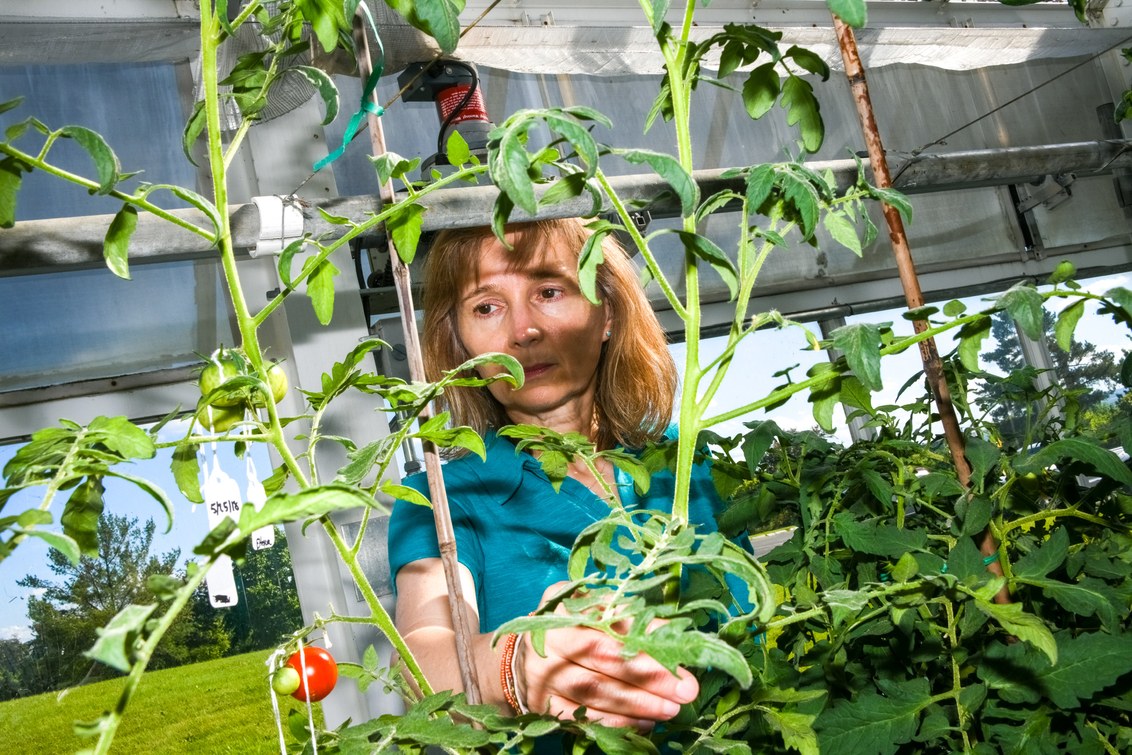
Joyce van Eck saw the twisted leaves of a tiny tomato sapling, and realized that the experiment was a success.
Let us return to the cruel reality: in spite of all the hype associated with the revolution in gene editing, over the past couple of years, this technology has found not only successes, but also limitations. Scientists will tell you that Crispr perfectly knows how to turn off genes. But to use it to insert new genes, as many advise, to “overwrite” the genetic line of a person, animal or plant, is not so easy. "Crispr is not a universal solution for everything," says Dan Voitas of the University of Minnesota, one of the pioneers of agricultural gene editing. Moreover, the genomes are very complex, even in plants. Just as a dozen knobs on a stereo tape recorder can form the sound of a single song, many genetic elements control the effects of a single gene.
The discouraging complexity inspired Lipman's laboratory for a cunning trick in the field of gene editing. “I remember I should have a note here,” says Lipman, pointing to the keyboard. The note simply says: " CRISPR promoter ".
In plants, as in animals (and humans), part of the DNA is outside the segment of the gene encoding proteins, and regulates their output. This sequence of nucleotides is called a promoter, and it sets up different output levels — something like loudness — for certain genes. What if, the Lipman group asked itself, could the Crispr be used to adjust the volume of a certain gene, twisting it or screwing it like a radio knob, by mutation the promoter in different places?
The greenhouse on Long Island is filled with examples of what is happening. Daniel Rodriguez-Lial and colleagues from Lipman's laboratory published an article in Cell about their discovery: through a mutation of the self-cutting gene promoter in different places, they were able to regulate its output by making small but important changes. Using Crispr to create a gene in various quantities, scientists, according to Lipman, can find "improved" versions of plants compared to those that nature has to offer.
However, improved from whose point of view? One of Lipman's favorite phrases is “golden mean.” She points to a genetic balance, by observing which, it is possible to obtain properties necessary for agriculture, without harming such necessary features as smell or form. “Now we can start thinking about taking our best varieties of tomatoes and making them bloom faster so that they can be grown at latitudes closer to the north, where summer is shorter,” she says. - We can start to think over new types of plants, new versions of existing food crops suitable for urban cultivation, such as those multi-tiered greenhouses that people make in abandoned warehouses. Adapt the plant so that it becomes more compact, it blossomed faster, in very compact conditions, produced fruit of the right size and in the right quantity, equivalent to greenhouse farming, only when using LED lighting. " Since each plant gene has its own promoter, this genetic adjustment can be done for almost any food crop.
Trimming is just one of the many ways that biologists change tomatoes. Last year, researchers from the Sainsbury laboratory in England conducted a genetic editing of a variety of tomatoes, the Moneymaker, so that it became resistant to powdery mildewand a Japanese research group recently produced seedless tomatoes. That May day, when I planted the seeds of my family tomatoes, I talked on Skype with two botanists from Brazil, who took the genetic editing of tomatoes to a new level. Together with the Wojtas laboratory of the University of Minnesota, Augustine Szogon of the University of Visoz and Lazaro Pérez of the University of São Paulo, reversed engineering produced wild tomato, the ancestor of all of today's domesticated varieties. Instead of tweaking domesticated tomatoes, they went back to the first step — the wild plant — and used the Crispr to cut off several genes at once. As a result, instead of a bushy weed, a genetically edited tomato became compact and spreading; instead of pea-sized fruits, tomatoes became the size of a cherry.lycopene , an important antioxidant, than any other known variety of tomato. This process is known as the new domestication.
"We did not go from pea to large size, but went from pea to cherry," Szogon described this first attempt. How do they taste? "Fine!" Perez stated. By the same principle, Lipman and van Eck domesticated wild Physalis, hoping that he will join the blueberries and strawberries as one of the basic berry crops.
This approach of new domestication is interesting in that it takes full advantage of the accumulated “wisdom” of a wild plant. Over tens of thousands of years of evolution, wild plants acquire resistance and endurance, resistance to diseases and stress. The domestication removed some of these traits. Since these features usually depend on a whole set of genes, Perez says, it would be extremely difficult to introduce them into already domesticated tomatoes, using Crispr or any other technology. But this approach may allow the use of other extreme properties. Perez wants to “domesticate” a wild species from the Galapagos that can tolerate such extreme conditions as high salinity and drought — such properties can ensure the safety of a culture in the face of climatic fluctuations in the future.
Rising temperatures. Change of seasons of growth. Population growth. Consequences of excessive use of herbicides . What if gene editing helps, let's say, include genes that increase disease resistance, which will help reduce pesticide use ? - asks Lipman. "Then it will be no longer just the cultivation of food for the whole world, but also the protection of the planet."

Lipman next to the tomato greenhouse.
All this new botany is turning off genes, adjusting promoters, new domestication is a wonderfully creative discipline that is developing very quickly. But, sooner or later, you will have to talk about its reverse side. Would consumers eat these tomatoes? Will Crispr-vegetables and grains become just “new GMOs”, as some fighters for the environment think, or are genetically edited plants different from the usual ones? “This is the beginning of a new conversation,” says Lipman.
The old conversation was caustic and emotional. The original genetically modified products from Monsantowere "transgenic", that is, biologists inserted other people's DNA from plants from other species. Gene editing is much more like old forms of mutagenesis, such as radiation and chemicals, but it’s not so unsystematic. Instead of receiving random mutations, Crispr targets specific genes. (When editing it is possible to miss, although Lipman has not yet met with such cases). That is why botanists are so eager to use this technology, and therefore the USDA considers edited cultures similar to the early mutagens, and does not require their special regulation. (In the case of adding new genes to the plants, the ministry decided to consider each case separately). Some European countries have banned GMOs,
Although many studies have not been able to detect the threat of GMOs to human health, society still has doubts. A survey in 2016 showed that 39% of Americans believe that genetically modified foods are less beneficial to health than regular ones, and even at Lipman’s home, his own wife at first preferred not to eat his genetically edited tomatoes.
There are other reasons why a genetically modified food is suspicious. Monsanto’s early attempts to obtain GMOs used revolutionary technology to produce no more useful or persistent products, and to develop soybean and maize resistance to Roundup’s proprietary herbicide.". The aggressive promotion by the company of such a product that serves its own purposes has been recognized as a disaster in the field of public relations.
Large agribusiness enterprises are trying to take advantage of gene editing. A recent flurry of associations has led to the emergence of three multinational giants of global agriculture: Bayer (completed the Monsanto takeover this year), DowDuPont (after the recent merger of Dupont with Dow Chemical) and Syngenta (which was bought last year by a huge Chinese company that edits genes, ChemChina) . Intellectual property issues may turn out to be more complex than plant genetics. The major agricultural patents for Crispr belong to the Broad Institute and DuPont Pioneer, and these companies came together last fall to create licenses for the applied use of technology in farming (all three giants licensed the technology). According to sources
And here the editing of genes comes across a brutal agricultural economy. Scientists can conduct research Crispr, without paying a license. But that's all. “I can't develop products and start selling them,” says Lipman. Commercial development requires a license payment - which is affordable only for rich agro-industrial companies.
There are several smaller biotechnology companies seeking to bypass large holdings and intellectual property issues. Calyxt, a start-up from Minnesota, co-founded by Wojtas, has already received the approval of the USDA for growing several crops created using the earlier and more complex gene editing technology, TALENs. Lipman advises a Massachusetts startup Inari. St. Louis's Benson Hill Biosystems is working to improve plant productivity with new patented genetic scissors, which it calls Crispr 3.0. But CEO Matthew Crisp (Matthew Crisp - yes, that's his name) claims that the "muddy" laws on intellectual property stifle innovation. Partners and future licensees of Benson Hill, he said, complain that the commercial rights to the Crispr gene editing technology are “too expensive, too burdensome or too uncertain”. The discovery of new enzymes for editing genes or other innovations may further confuse the patent landscape. As one source said, "this is a mess, and the situation will only get worse."
That is why so much attention is concentrated on the new startup Pairwise Plants, in which Monsanto cooperated with several pioneers of Crispr from the Broad Institute. In recent statements made for Bloomberg, the company's director Tom Adams, the former vice-president of Monsanto, stresses how new cultures are “really useful for people,” which caused a lot of surprise. “Monsanto did not speak that language,” Voitas said. Monsanto pedigree raises concerns among some nerds. “The question is: they have a huge baggage associated with consumer acceptance,” says Lipman. “And if they screw up here, they will spoil everything for everyone else.” Everything just held their breath. ”
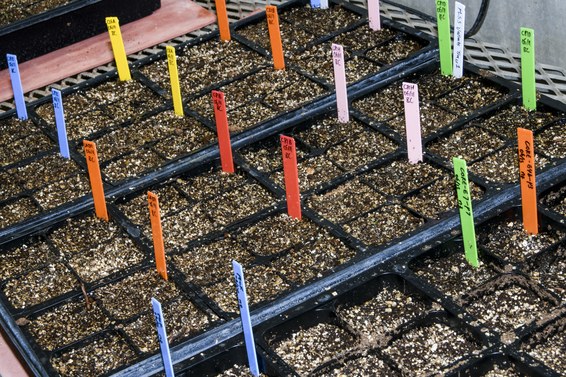
Trays for germinating tomato seeds
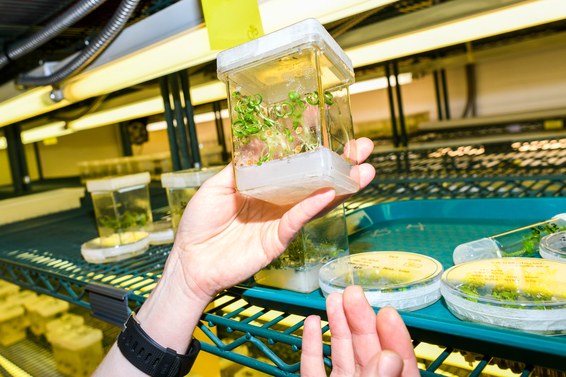
Sprouts Physalis pruinosa at the Beuys Thompson Institute in Ithaca
Here is a simpler question for you: what about taste? When I asked Harry Klee if he tried any 8059 Knotless tomatoes he grows, he laughed and said he was not honored. “We know that the Florida 8059 variety doesn’t have any taste as such.” Improving the taste of tomatoes has always played only a second fiddle in a market economy. Most of the tomatoes growing in Florida go to the food industry — “to McDonald's and subways,” as Kle says. "The sad reality is that the industry does not seek to bring out a more tasty tomato." Kli loves to talk about taste - he heads the group that has identified a couple of dozen genetic sites responsible for the exceptional taste of tomatoes. “We absolutely know how to produce a sweeter, more tasty tomato,” he says. But such tomatoes are economically unattractive.
And what about consumers? Would they accept a genetically edited tomato if it tasted better? Or, to paraphrase, would it be botanical blasphemy to edit family varieties?
In his tour of the greenhouse, Lipman stopped at some point in order to kindly dismiss the family varieties. He admits that these are excellent tomatoes, but "they give a very fucking crop." From my own experience I can confirm that family varieties are too picky and not very productive, and also have a poor immune system - for the most part they upset you, at least when growing in the garden. They start to grow like Usain Bolton a hundred meters, and then turn into emaciated, withered plants, suffering from all sorts of ailments, fungi and parasites, with falling brown leaves. It would be tempting to use new technology to edit them. Kli "is looking forward to when editing the genes will come to the gardens". He believes that gardeners, such as me, may take the argument that genetically edited tomatoes are not GMOs.
“What if we gave you a brandivine variety with a high content of lycopene, long shelf life, with more compact bushes? Kli asked me. “I can do it all right now by turning off genes with editing.” And I could give you something that is almost identical to “brandyvaynu”, only half the height, and with fruits that do not go limp during the day, and besides, a deep red color due to lycopene. Would you grow this? ”
“ Naturally! ”I told him.
“I think everyone would grow this,” he said. “I think it would be a great opportunity to teach gardeners what the selection method is.”
Not everyone will agree with Kli (or me). Voitas, a pioneer of plant editing genes, laughed when I asked him about the genetic editing of family varieties. “Partly because these are family varieties. That is, the name suggests that it is some kind of value from the past. And not something new, technological. " A little closer to the point, he reminded me of the "outrageous" prices for licensing the technology of gene editing. "Therefore, your idea of edited family tomatoes will never become financially attractive for someone to pay for a license."
The result: genetically edited tomatoes, apparently, already on the way to the market. But tomatoes with improved taste should not be expected in the near future.
In early June, Zack Lipman returned to farming. Sunny, as it seemed at the beginning, in the afternoon, he and a dozen colleagues transplanted about 8,000 genetically edited tomatoes on a field on the grounds of Cold Spring Harbor laboratory. There were many familiar mutants - knotless, self-suppressing, insensitive to light. “Plant deeper!” He shouted, and the team sped up, trying to root the seedlings in the ground under a suddenly darkening sky.
The final fate of genetically edited tomatoes is unpredictable just like the weather, but the fate of these particular tomatoes is less mysterious. Lipman often takes them home. “I've already eaten a lot of genetically edited tomatoes, yeah,” he laughs. It is not surprising that he does not find in them any differences from ordinary ones. “This is not GMO,” he insists. - The result is the full equivalent of the natural mutation. So why not eat them? This is just one of thousands or millions of mutations that can or cannot affect the health of the plant — and we eat them! ”
